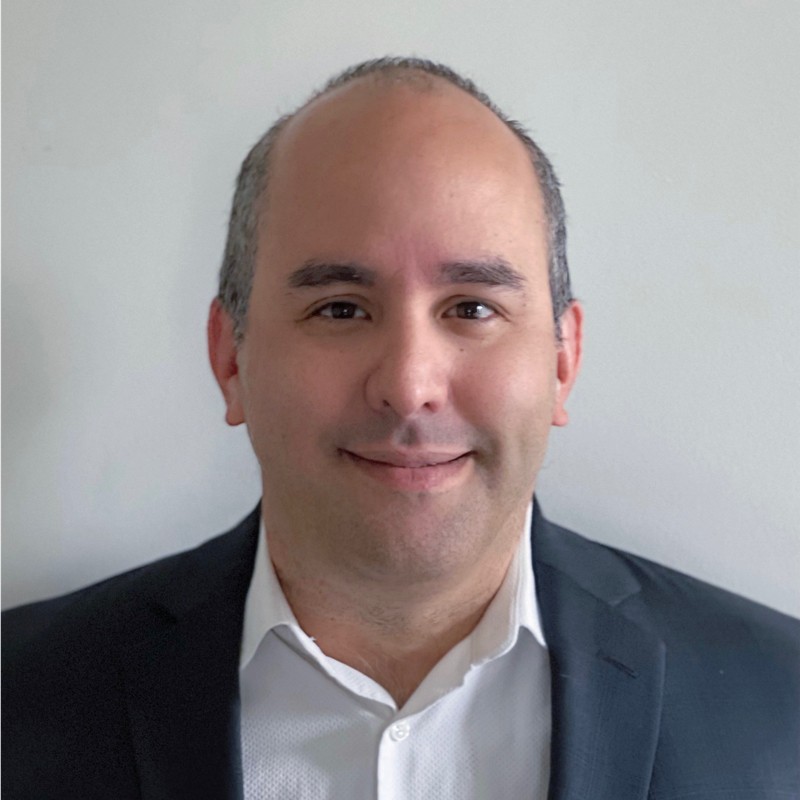

Why are we seeing so many premium-priced rare disease drugs coming on the market?
Juan: The current model of rare disease drug development has been to develop a drug, probably faster, and though you price it really high, it’s for a smaller number of patients. That was a very attractive model for investors and manufacturers; instead of creating one blockbuster, they’d acquire many small ultra-rare disease therapies and gather them into a portfolio. These drugs were somewhat sheltered from market access pushback since any one would have a low impact on any payer’s budget.
Wyatt: The numbers of these drugs continue to increase for two further reasons. There’s the sheer advancement of science and biology. And pharma and biotech like the small patient and prescriber pools which they can address much more efficiently than for mass-market drugs.
And the prices are high because they include the underlying cost of the program, the cost of R&D, including failure, and what the market will bear. Gene therapies, most of which are targeted at rare diseases, may get less costly as manufacturing platforms become scalable and we do less autologous and more allogenic. Something similar happened with monoclonal antibodies over the last 20 years. But one head of manufacturing in the cell and gene space doing truly personalized medicine recently told me they lack manufacturing scale and cannot import drugs across borders. So, they need to build multiple manufacturing sites; the investment is enormous, and the margins are lean.
Carrie: We help clients model options ahead of time to predict how payers may react to a trial design. We test with physicians how onerous certain prior authorization requirements are and how they might navigate those in practice. We have tools in pricing analysis, market research, and health economic modeling methodologies to demonstrate value and align payers and manufacturers on pricing constructs. In our forecasts, we evaluate how various trial designs and patient inclusion criteria will affect payer coverage at different price bands. That helps us identify the market access adjustments to the patient population we need to model in different scenarios to illustrate strategic trade-offs between trial design and market opportunity. We also explore developing an evidence-generation strategy, including real-world evidence, to support the value story.
For example, we are working for a company designing its pivotal trial in a rare disease, helping them understand the impact of setting a specific biomarker threshold for patient inclusion on their overall market opportunity. We are assessing payers likelihood to set a restrictive prior authorization and determining the portion of the patient population that would be eligible for the therapy under the likely payer conditions.
Wyatt: We also model managed entry agreements, that is, arrangements between firms and healthcare payers that allow for coverage of new medicines while managing uncertainty around their financial impact or performance. These contracts typically include the payment terms and price, as well as outcome measures and mechanisms to reward clinical outcomes and claw back payments when they are not realized.
Our research shows that ICER’s cost-effectiveness reports play an increasingly significant role in price negotiations with payers and that preparing for an ICER review significantly improves the chances of a favorable outcome. ICER is influential because they are independent, objective, and transparent in publishing and taking public comment. Like any model, theirs operates on a set of assumptions. We build models as they do, looking at what happens at different price points or efficacy levels so that clients can effectively engage with ICER and payers and tell their side of the story.



Manufacturers have these programs for patients that really need them, and traditionally that’s been less than 10% of the patient population. They were never meant to cover the costs for employer groups.
Juan Camilo Roman, MBA
Vice President,
Health Advances

Wyatt: Increasingly, in rare disease and gene therapies, payers are saying that if they are going to pay high prices, they need to know that the drug will work, or the payer will refund or cap the payment. So, for a client developing a gene editing therapy for a rare disease, we’re researching payers’ likely utilization management at different price bands and their prospective amenability to risk-sharing or outcomes-based contracts.
Juan: A powerful tool is value-based contracts. For example, Alnylam offered contracts with payers to alleviate the high-risk outlier costs because they wanted to ensure the system was sustainable. So, for instance, if the actual prevalence of a disease was much higher than expected, Alnylam would offset some of the cost of the outlier treatments. For products with a lot of weight-based dosing variability, they guaranteed a set cost-per-patient.
Because these contracts protect against outliers, they generally cost a few percent rebate to the plan. But they reduce the risk for the payer. They also allow the manufacturer to obtain market access quickly. For one drug, we started engaging with payers two years before launch to talk about the value of the drug, where we saw the prices going, payers’ concerns with the prices, and where they saw risks. That allowed us to model risk corridors that protected payers from excessive costs and would not cost the manufacturer a lot of money. It’s very effective because payers appreciate having their concerns listened to and having prepared the ground allows us to ask them for quicker reviews.
It’s good to start that process around two years before the anticipated launch to have the agreements in place. The main point is, as you start thinking about launching a rare disease product, to consider how you will engage with payers as partners.
Carrie: It’s too early to know how this will play out. But I think there will be pushback from rare disease companies since this does seem to contradict the intent of the Orphan Drug Act to spur development in rare diseases. Rare disease companies will want to consider their revenue potential for the product in the target indications and analyze where that product will fall in total budget impact compared to other products that might be targeted by CMS. That would enable a company to assess the likelihood of price negotiation and allow them to model the impact of price reductions on the program.

How developers can navigate reimbursement challenges for rare disease drugs in the US

Three trends impacting market access in the EU
Clearing the way for patient access

What are some of the risks for rare disease companies, and how can they manage them?
What tools do developers have to get rare disease products reimbursed by payers?
What do you think will be the impact of the Inflation Reduction Act on orphan drugs?
Back to top

Meet the participants








Share

How is this affecting the US healthcare system?
Wyatt: The explosion in the number of rare disease drugs approved and in development is putting pressure on the system. We’re asking healthcare payers to cover therapies that previously weren’t part of their underwriting or actuarial measures.
Juan: Payers are saying this model will not be sustainable because as more CGTs and ultra-rare products launch, they will put a lot of pressure on how to pay for them.
Eventually, cracks will show in the system. One of those is with self-insured, medium-to-small employers. Many of them are deciding not to cover rare disease products based on the rationale that if patients don’t have coverage, they can go through a manufacturer’s patient assistance program (PAP), which will pick up the bill. Manufacturers have these programs for patients that really need them, and traditionally that’s been less than 10% of the patient population. They were never meant to cover the costs for employer groups. Some PAPs are approaching 30% of their patient population. That isn’t sustainable, and if the trend continues, manufacturers will end those programs or change them so they cannot be used this way.
Carrie: In the meantime, payers are increasing their scrutiny of rare disease therapies. In the US, they are essentially still price takers, so we see increased restrictions in utilization management strategies such as prior authorizations, reauthorizations, step edits, and quantity limits to constrain access to specific patient populations and lines of therapy.
For instance, payers may limit the patient population that can access the therapy to those specifically included in the clinical trial population. In some cases, that’s more restrictive than the label. Our analysis has shown that more stringent payers impact 50% of covered lives.
What tools do developers have to get rare disease products reimbursed by payers?
Wyatt Gotbetter, MPA
Senior Vice President,
Worldwide Head of Access Consulting,
Parexel International



Carrie Jones, MS
Partner,
Health Advances



Juan Camilo Roman, MBA
Vice President,
Health Advances







Wyatt Gotbetter,
MPA,
Senior Vice President, Worldwide Head of Access Consulting,
Parexel International

Wyatt brings more than 25 years of industry experience to his role as head of Parexel’s access consulting business. Before joining Parexel, Wyatt was a partner at Health Advances, Parexel’s independent strategic healthcare consulting unit, where he led the company’s biopharma practice. He focused on commercial growth and business development strategies for therapeutics. He has also worked at the Boston Consulting Group and Biogen, where, as head of new-product commercialization, he developed clinical and commercial strategies for pipeline programs in neurology, immunology, and oncology.





Carrie Jones, MS,
Partner,
Health Advances

Carrie joined Health Advances, Parexel’s independent strategic healthcare consulting unit, in 2007 and leads its orphan-disease practice. She focuses on developing novel therapeutics, drawing on her expertise in commercialization strategies, benchmarking, new-product planning, and market assessment and forecasting. Her clients have ranged from small start-ups and university technology transfer offices to the largest biopharmaceutical companies and private equity firms. She is particularly interested in specialty markets, including ophthalmology, metabolic, respiratory, and orphan diseases. Before joining Health Advances, Carrie worked at Merck for several years as a medicinal chemist.





Juan Camilo Roman,
MBA,
Vice President,
Health Advances

Juan leads the US Pricing and Access biopharma practice at Parexel’s independent strategic healthcare consulting unit, Health Advances, where he helps companies develop pricing strategies from early development to commercialization. Juan has a distinctive approach to quantifying the price potential of innovative products, taking into consideration the policy environment, relative value, and most effective negotiating strategy for respective payer channels. Before joining Health Advances, Juan headed the market access and pricing departments at several Boston emerging biotechnology companies, was senior director of global market access at AbbVie, and was a managing consultant at ZS Associates, Navigant, and IQVIA.

Participants












Participants

















Wyatt Gotbetter,
MPA,
Senior Vice President, Worldwide Head of Access Consulting,
Parexel International






Jorge Camarero,
PhD, MSc
Vice President,
Technical, Parexel International






Juan Camilo Roman,
MBA,
Vice President,
Health Advances



How is this affecting the US healthcare system?



















Negotiating with US insurers
Download the Executive Summary


Download the Executive Summary


Meet the contributor












Listen to Podcast






Sangeeta Budhia
PhD, MSc
Vice President,
Head of Global Pricing and Market Access,
Parexel International
15-30 word intro lorem ipsum dolor sit amet, consectetur adipiscing elit. Donec condimentum sapien non. lorem ipsum dolor sit amet. consectetur adipiscing elit. Donec condimentum sapien non.
Three trends impacting market access in the EU

As Parexel’s global health technology assessment strategy lead, Sangeeta positions clients’ products for maximum uptake at the optimal price in the shortest possible time. With more than 16 years of experience in market access and health economics and outcomes research, she helps large, small, and emerging companies develop evidence-generation strategies to support reimbursement from payers. Her specialties include pivotal clinical trial design, long-term data-collection studies, real-world evidence-generation plans, and early engagement with EU HTA bodies.
Contributor
How developers can navigate reimbursement challenges for rare disease drugs in the US

Back to top

Rare disease drug developers face three major market access challenges in the EU market today. Parexel Pricing and Market Access expert, Sangeeta Budhia, shares what they need to know to succeed.
Sangeeta Budhia,
PhD, MSc
Vice President
and Global Head,
Pricing and Market Access,
Parexel International
Report Home








Play Video





Back to top


Share



EU coverage trends
Download the Executive Summary


Download the Executive Summary

